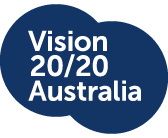This year marks the fortieth anniversary of the start of the National Trachoma and Eye Health Program. The program, run by the Royal Australian College of Ophthalmology, set out to eliminate trachoma and other eye conditions in rural and remote communities and, for the first time, record the status of eye health in rural Australia.
Fred Hollows headed up the ambitious project and worked closely with a core team and up to 1,000 people who supported the program, right across Australia. These teams visited more than 465 communities and screened about 100,000 people, 62,000 of whom were Indigenous Australians. They found nearly half of Australia’s Indigenous population had trachoma and in some regions of the Northern Territory and Western Australia the rate was as high as 80 per cent.
This was shocking to all involved, considering that the condition was rarely found outside of these communities in mainstream Australia.
Fred was appalled by what he saw and he vowed to do what he could to improve things.
But the heroes of the program were the Aboriginal workers, community members and others who helped with the logistics and delivery of services on the ground. It’s not possible to know all of their names, but without them there’s little doubt the program would have failed.
There were just two Aboriginal controlled medical services at the start of the program and 13 by the time it finished. There are now hundreds around Australia.
Shamefully, Australia is the only developed country to still have trachoma – an issue that needs greater intervention from government and health providers at all levels.
However, cases in Australia are small in number when compared to the epidemic that we are seeing in Africa and Asia. Trachoma is the leading infectious cause of blindness in the world today. As many as 229 million people live in areas where they are at risk of developing this crippling disease.
I recently visited the Oromia region in Ethiopia to witness the work of The Fred Hollows Foundation trained doctors, nurses and health workers in fighting this blinding eye disease.
Trachoma is at endemic levels in Oromia; 27 million people are at risk of developing the disease and without vital surgery, 155,000 are at risk of losing their sight. People who suffer eye damage and blindness can no longer do productive work and must rely on the care of other family members, usually girls.
It is imperative that health organisations and non-government organisations such as The Fred Hollows Foundation continue to work to ensure better access to antibiotics, health services, and water and sanitation. Early corrective surgery and monitoring of scarring are also key to eliminating trachoma as a public health problem in endemic communities.
Fred would be calling on all of us to do more.
The recent GET2020 conference in Sydney continued the push to ensure organisations remain focused on eliminating trachoma as a public health problem by the year 2020. While this is ambitious, we are making headway and we must continue to do more to eradicate this disease all over the world.
Forty years on the fight against trachoma continues.
Gabi Hollows, Co-Founder, The Fred Hollows Foundation
